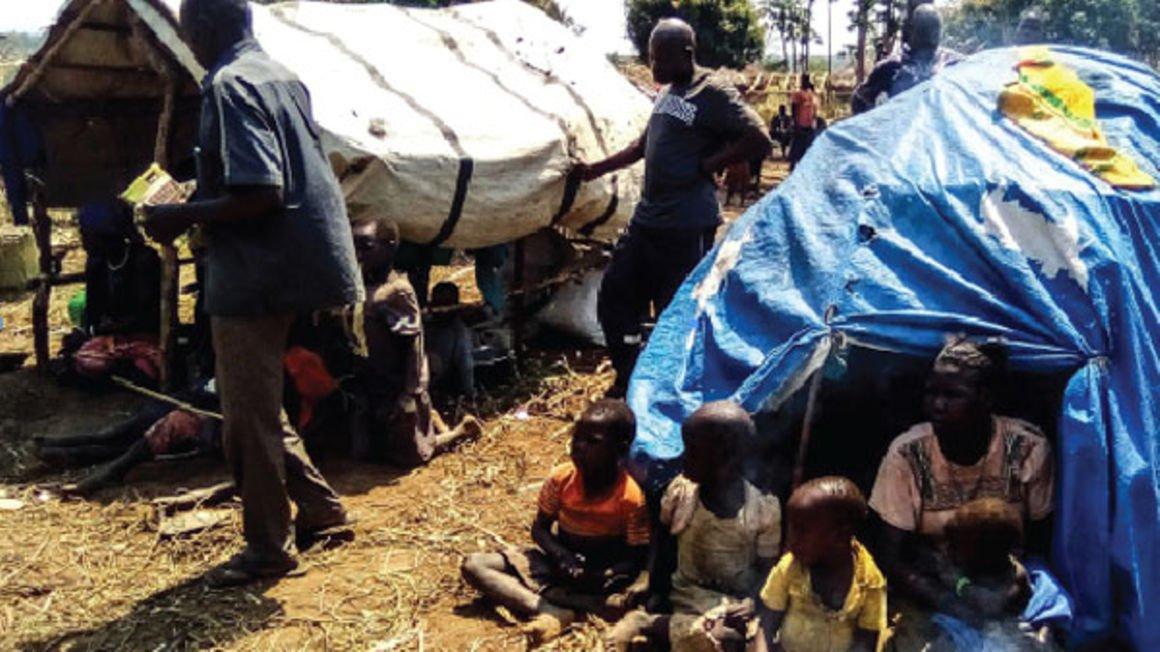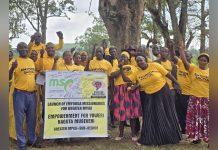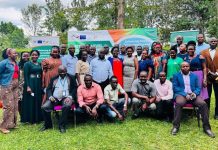Africa-Press – Uganda. If it is not tales of killings or mass displacements in vicious fights over land, then it is either a public spat between President Museveni and the Kabaka of Buganda or a clash among the powerful and wealthy, both invested in expropriating the hapless. Now Mr Museveni has a cure, or thinks so: Abolish Mailo tenure, which he brands as “evil and unfair”, much to the chagrin and opposition by Mengo. In this 3-part series, airing on NTV-Uganda and KFM radio, and published in this newspaper starting today, our reporter Esther Oluka examines the laws, the question of impunity, and why mailo tenure, in the eyes of the government, is the original sin regarding land ownership.
On August 18, 2001, Uganda People’s Defence Forces (UPDF) soldiers reportedly descended on Katadde-Kitemba Village in Mubende District and kicked out hundreds of residents from land they had lived on for generations.
There is bitterness in the voice of Mr Peter Baleke Kayiira, a resident, as he recollects the origins of the eviction and the shock that armed forces commanded by the Constitution to protect their lives and property, were doing so at the behest of a foreign investor.
The first warning, according to Mr Kayiira, came on June 11, two months before the planned eviction, when he and other people received a letter informing them that all the people who were staying on Block 99, Plot 1 in that village, were going to be relocated. Reason? The property was going to be acquired by the government, through Uganda Investment Authority (UIA), to be leased to an investor for large-scale coffee farming.
“They [told] us that there was going to be compensation, but you know how slow government processes are. How can such a process be completed in barely two months? I began smelling a rat,” Mr Kayiira said.
He and village-mates hired lawyers to fight their ownership battle, but when the lawyers began work, the Mubende Resident District Commissioner (RDC), Mr Perez Katamba, reportedly delivered the shock news.
“The RDC approached us, saying the deadline had instead been [pushed] to August 15; that, by that time, we should have left the land,” he said.
They residents ignored the red flag, and no one moved an inch. Then three days later, Mr Kayiira said, a UPDF contingent stormed the village.
The army, he said, looted and destroyed people’s properties and set some houses alight. We were unable to independently corroborate this claim, but the contestation over ownership of the land or what happened during the evictions, 20 years ago, pends a final determination in the appellate court.
Other soldiers fired live bullets, sending villagers fleeing in disarray for their safety.
Before the Katadde-Kitemba eviction, to create space for Kaweri Farm, Mr Kayiira says he owned a kibanja on Block 103 in Kitemba Village, stretching about 20 acres of land, and another kibanja on Block 99 in Luwunga Village, measuring about 30 acres.
As the generations before him, he presumed to have ownership, and hoped to be treated, as provided under the 1928 Busuulo and Envujjo law, which was the colonial administrators’ attempt to resolve land conflicts in Buganda by balancing the rights of Mailo land owners with those of tenants by occupancy.
Under this arrangement, Bibanja holders had an equitable interest in Mailo land, which interest could, with the concurrence of a registered owner, be transferred.
With this in place, Mr Kayiira says he still doesn’t understand how he lost his land without consent, prompting him to run to court in a case pending final determination.
“The land at Block 99 was official Mailo while the one [on] Block 103 was Private Mailo,” Mr Kayiira said.
Where his home once stood and he farmed is now a coffee farm, called Kaweri Coffee Plantation Ltd, a subsidiary of the Neumann Gruppe, a German Agriculture company. According to information on the company’s website, the plantation occupies a total area of 2,512 hectares, of which 1,626 hectares, are planted with Robusta coffee and 36 hectares with woodlots.
The remaining 850 hectares comprises highland rain forests and swamps while part of it has been used to develop infrastructure and position processing equipment.
In an email, Mr Hans Faessler, the general manager of NKG Tropical Farm Management GmbH, a subsidiary of NKG Farms GmbH, a Hamburg-based Neumann Gruppe Company which oversees the Kaweri plantation, told this newspaper that they have done everything to resolve the case.
“Ever since this has come to life, we have invested much time and resources towards resolving this case, but there are various parties with different interests involved, which makes this very complicated,” he noted. Mr Faessler detailed what he said was the chronology of events concerning the plantation since 2000.
In 2000, the company never intended to acquire land in Uganda. Instead, it sought to enter into a long-term lease contract with Ugandan government. In the same year, the lawyers of the buyer, which is Ugandan Investment Authority (UIA), and the seller, Mr Emmanuel Bukko Kayiwa, carried out due diligence audits and established that Mr Kayiwa was the land owner.
“Mr Kayiwa sold Block 99 to the Ugandan government, represented by UIA. Neumann Gruppe GmbH/ Kaweri Coffee Plantation Ltd (Kaweri) leased the land from the UIA for 99 years free from encumbrances,” Mr Faessler said.
Toward the south-western border of Block 99, in an area called Kitemba and Luwunga, a conflict developed between 25 small farmers and the seller, Mr Kayiwa.
The small farmers falsely believed that they were in an area of the neighbouring Block 103 and, therefore, refused compensation payments; in reality, however, they lived on Block 99.
“Mr Kayiira and an alleged 400 co-accusers instituted civil proceedings against the state of Uganda and against Kaweri [Plantation]. The plaintiffs thus claim alleged damages resulting from the supposed displacements during the sale of Block 99. The proceedings are also about the alleged appropriation of crops of the plaintiffs by Kaweri. The proceedings continue to this day,” Mr Faessler said.
As of December 2020, the hearing of the case was halted due to the Covid-19 inflicted congested court diary.
Like Mr Kayiira, septuagenarian Ezra Twinomujuni said he fears he may lose his current home in Kisiita Town Council, Kakumiro District, after different people laid claim to the land.
“I cannot go and then start developing another place. I have children and all these things. If the claimants who are bothering me are indeed the rightful owners of this land, let the government come in and compensate them so that we can settle [elsewhere] peacefully,” he said.
Mr Twinomujuni, who was part of the group that was resettled in Kakumiro after eviction from the Kibale Forest Corridor was gazetted as a game reserve and later a national park, thinks the government settled him and others on the land that might have belonged to either someone else or multiple people.
“Now, where do I go? If only the government could help us because it is the one that brought us here. If they don’t, then the problems can cause bloodshed because like me here unless you kill me, you cannot force me to leave this place and go somewhere else. If you don’t kill me, then, I will kill you,” Mr Twinomujuni said.
It might be counter-productive to treat this rant as an empty threat. The 2020 police report attribute tens of homicides in the lockdown year to land wrangles.
According to the report, an equivalent of Shs4 billion was lost due to land fraud. This, when added to Mr Kayiira and Mr Twinomujuni’s ordeals, points to a chronic land problem in Uganda.
These spread across the country, including land exchanged during the colonial era.
Most of the titles in Bugangaizi and Buyaga counties in present-day Kakumiro and Kagadi districts, which at Independence had already been annexed from a defeated Bunyoro to Buganda, but returned to Bunyoro following the post-Independence 1964 referendum, are held by absentee landlords in Buganda.
It legally means the person who owns and controls the land is different from the settler and user, in which case the owner, as many cases show, could violate the law and do anything anytime with such land, with or without the concurrence of the tenant.
This explains why Mr Twinomujuni and other persons in his kind of predicament say they have no legal safeguards and constantly face the threat of eviction.
In Uganda, the title of land, which is considered a conclusive evidence of ownership, is issued by the State and entered into a national register at the Lands Registry – a land holding otherwise called the Torres System.
So, is this the problem? Or, is colonialism and the preceding periods of tribal wars and conquests, which re-drew boundaries, the internecine issue?
One possible explanation is that the deeds by colonialists, rather than solve the land problem, instead exacerbated it.
This is because in Uganda, as elsewhere, the British colonialists used a divide-and-rule method, propping and rewarding local collaborators against others, including expropriating the vanquished of their land.
Mailo derives from a corrupted pronunciation of mile, the unit used for measuring land as it was being doled out to, in the words of State Minister for Lands, Mr Sam Mayanja, royals and chiefs who dispossessed ordinary Baganda.
This Mailo Land Holding, one of four tenures recognised in Uganda’s Constitution, is what President Museveni described on Heroes Day, this year, as “evil and unfair” and seeks to dismantle.
Newly-appointed State Lands minister Mayanja, a vocal critic of Buganda kingdom, has positioned himself as the lead crusader in the executive-led campaign to ostensibly undo the land-related ills of colonialism.
In an interview for this article, he, while echoing the President’s remarks, said: “This (Mailo) Land Tenure System is evil. Look at how it began…the rest of the [Baganda] did not know what was signed in the [1900] Agreement and only became surprised after realising [that] their land had been taken,” Mr Mayanja said.
However, senior lawyer Peter Mulira, a scion of Ham Mukasa, the chief of Buganda’s Kyaggwe County comprising present-day Mukono and Buikwe districts, says land in Buganda was communally-owned by clans that had settled on the Nalubaale (Lake Victoria) during the Bantu migration.
Clan heads made decisions on land issues. However, when more clans arrived, a Kabaka was appointed as the Ssaabataka.
“That is the head of all land matters. That’s going back about 800 years ago. So, a system of land-holding developed in Uganda where land was vested in the Kabaka on behalf of his people and he would give out portions to individuals who became owners, but in a fiduciary relationship with the Kabaka,” Mr Mulira argues.
As the kingdom expanded, it became difficult for the Kabaka to manage land. So, he appointed chiefs to work on his behalf. By the time, the colonialists arrived in 1894, the system had been institutionalised.
When the British started consolidating Uganda as their protectorate, with Buganda as the springboard, and wanted to be able to meet their expenses locally, Sir Harry Johnston got special orders from the English Monarch to grant freehold estates to the Kabaka, regents, and principal chiefs.
They gained rights over unoccupied lands for the Crown, instituted boards of trustees which would administer and protect peasants in rent-free rights to the land they occupied.
“They negotiated a treaty which you know as the 1900 Uganda agreement under which three things were aimed at; set up the kingdom’s constitution, sort out the land issue, streamline administration and raise funds for the government to function and that was tax,” Mr Mulira says.
This agreement divided the 19,600 square miles that form the Buganda Kingdom among different entities and individuals.
Under the agreement, the Kabaka got 958 square miles, some of it personal and the other lands assigned to his office; 1,000 chiefs and private landowners shared equally 8,000 square miles; and, the rest was Crown land vested in the government of the day.
The British struck similar agreements with other kingdoms, which explains similar land holdings in Tooro, Bunyoro, parts of Ankole kingdoms, and Bukedi in eastern Uganda.
Mr Mayanja argues that the 1900 Buganda Agreement created inequity in land ownership and these historical injustices are what must be fixed if the country is to move forward.
“It (tenure system) created serfdom. A Muganda became a serf on his own land and was subjected to evictions without question,” he said.
Uganda’s Constitution of 1995 provides for four systems of land holding: The first is customary; which is land that is held largely by indigenous people basing on particular customs, traditions, and norms of people; the second is freehold, where one owns the land for eternity and they are entitled to a certificate of title; leasehold, which is where a lessee has exclusive possession of land through an agreement with the landlord; and, mailo, prevalent in Buganda and under which dual ownership of same land is possible.
Customary land ownership is widespread in northern and eastern Uganda, while lease holding, unless renewed, lasts for a fixed period of time (usually 49 or 99 years) and involves payment of premium and ground rent, while the freehold enables ownership in perpetuity.
Experts argue that mailo and freehold land owners hold similar rights, but the former must respect the rights of lawful and bona fide occupants and Kibanja holders to occupy and live on the land under Section 3(4) of the 1998 Land Act (amended in 2010).
Most land in Buganda, which hosts the political and commercial capital of Uganda, and by implication the highest demand due to the concentration of the country’s most powerful and wealthiest people, is either freehold, private or official mailo holding.
Official mailo is land that was given to Buganda office bearers such as the Kabaka and his chiefs and belongs to the offices they hold. This means it cannot be sold entirely, but can accommodate bibanja holders as well as lease holders. In this case, Bibanja holders are people who had settled on the land in Buganda as customary tenants with the consent of the mailo land owner under the Busuulu and Envujjo Law, 1928.
The current issues around mailo land started with President Milton Obote’s abolition of kingdoms in 1967, which left official mailo exposed to encroachers.
Idi Amin, who toppled Obote, then set out to solve the land question through the Land Reform Decree of 1975, which nationalised all land in Uganda and stripped landlords of any rights.
The wars of liberation that started after President Idi Amin overthrew President Obote and ended in 1986 when President Museveni captured power, created a new wave of settlers.
As thousands migrated towards central Uganda or Buganda, and when the liberation wars ended, a honeymoon ensued between victorious Yoweri Museveni and his fighters on the one hand and Baganda allies, who had provided a sanctuary in Luweero area for National Resistance Army’s guerrilla group.
Once in power, the Museveni government, anchor in power by its military wing, set up the Constituent Assembly that between 1993 and 1995 debated and promulgated Uganda’s current supreme law, prescribing the four land tenure systems: customary, freehold, mailo and leasehold.
The coming into force of the 1995 Constitution and the Land Act in 1998 turned the Twinomujunis, named earlier in the story as vulnerable to eviction, into tenants by occupancy as this was no longer public land.
Section 31 (a) of the 1998 Land Act, amended in 2010, protects tenants with or without certificates of occupancy and provides for eviction of a lawful or bona fide occupant to happen on only one ground: non-payment of ground rent for two consecutive years. But often tenants have been evicted regardless of this provision.
Ms Bernadette Bakkidde, the director access to land justice at Landnet, a network engaged in research, capacity, development and policy advocacy on land, argues that some of the evictions are done illegally.
“It’s the responsibility of a landlord to introduce himself to the tenants because if you do not and you evict people, that’s fraud. But, also, the tenants have to look for the landlord…,” she says.
So, who are the legal occupants? These are Bibanja holders who settled on mailo land with the landlord’s consent and bona fide occupants are individuals settled on the land, most unchallenged, 12 years before the coming into force of the 1995 Constitution or by October 8, 1983 — the middle of National Resistance Army’s (NRA) five-year war.
Mr Peter Walubiri, another lawyer, says the period to index legal occupancy was curious.
“In 1983, there was war in Buganda. So, you are saying those who were on the land during the NRA war are legalised, but many people do not know…Even those who settled in 2000 want to be protected by the law… The problem has many times been following the law, unfair or bad as it may be,” he said.
The 1998 Land Act operationalised provisions of the Constitution, protecting bona fide occupants, and purchasers.
Mr Walubiri insists that not every purchaser is protected. “Only purchasers who purchased land before the (1998) Land Act [are protected by law]. Because when the Land Act came into force, if you wanted to buy an occupancy right, you needed the consent in a prescribed form…So, after 1988, you could not purchase Kibanja without the written consent of the owner of the land,” he argues.
This would suggest that whereas there are illegal evictions, there are many cases of illegal settlers too. The Ministry of Lands indicates that many tenants are not reflected on the main mailo titles and are often labelled trespassers. However, section 31(9) of the Land Act, which appears intended to cure this defect, provides that: “For the avoidance of doubt, the security of tenure of a lawful or bona fide occupant shall not be prejudiced by reason of the fact that he or she does not possess a certificate of occupancy.”
Mr Dennis Obbo, the Lands ministry spokesperson, said most of the tenants have not registered tenancy at the Lands Registry. This means when someone buys land from a mailo land owner, the tenant’s interest on the land is not reflected on the title.
“Anybody who is coming to buy, if the main owner is selling, will carry out a search and find out [that] the seller is the actual owner and there are no encumbrances and that’s the beginning of all the problems …,” he says in reference to buyers who do not do due diligence before entering a transaction.
But there are other factors, among them prime location, that drive up the price and demand for land, and with it, the fight for it.
Unlike Peter Baleke Kayiira, who is in court battling for the ownership of land against the government that is supposed to protect his right to property, Mr Twinomujuni on the other hand finds himself is double predicament: multiple people want to snap up what he calls his land which, by the conspiracy of fate, is within the proximity of the route of the East African Crude Oil Pipeline, potentially exposing him to the appetite of land grabbers and speculators.
Mr Christopher Bwanika, the Buganda Kingdom attorney general, says the central government, which is bidding to end mailo tenure, is being misadvised to blind spot the root causes of land problems such as increasing population and rapid urbanisation, which both pile the pressure on land, alongside weaknesses in the systems and politicisation of land dispute resolution.
In part two tomorrow, we examine the major causes of land conflicts and why the conflicts mostly play out on, or are most illuminated, on mailo land.
about mailo land
This specific land tenure system came into place following the 1900 Buganda Agreement, which prescribed how the 19,600 square miles of land in the would be divided. The land law of 1908 gave this tenure system a more refined definition stating that if one got a piece of land, theirs personally, owning it in perpetuity, the chunks of land could then be defined as Mailo. Though Mailo land is predominantly in the central region of Buganda, some western parts of the country, mostly the kingdoms of Tooro and Bunyoro, are also stated to have bits and pieces of the same land tenure system. “It is (sometimes) very difficult to say how much Mailo land is [in Uganda] and who owns it because the systems of records are not quite up-to-date,” Dr Rose Nakayi, a senior lecturer at the Makerere University Law School, says.
Mailo land is divided into two categories; namely, official and private mailo. “When you mention official Mailo, this one is officially held in Buganda while private Mailo is individualised land owned by people (also in perpetuity). Both categories are anchored in the 1900 [Buganda] Agreement,” she adds. However, Records from Buganda Land Board, a company entrusted to manage Buganda Kingdom land, reveal that official mailo mostly comprises Kabaka’s official 350 square miles of land, Namasole’s 10 square miles of land, Bannaalinya’s land, Kabaka’s lake, former Omulamuzi and Omuwanika’s official residences at Mengo, the administrative seat of Buganda king, land adjacent to the Mengo Lubiri on which Buganda Ministerial Houses used to stand, all Bassekabaka’s tombs, Buganda Works Building at Kakeeka, Basiima House, and Nnaalinya’s House at Rubaga. Furthermore, the assets under Kabaka’s mandate extend to include all those as outlined by the 2013 Agreement between the President of Uganda and His Majesty the Kabaka.
They include former estates of Buganda Kingdom comprising land in Buganda in urban centres or towns which are formerly Crown land, land where former administration headquarters (counties and sub-counties) were situated, land not claimed or utilised or occupied by any lawful or bona fide occupant, land on Mityana Road (Jjeza farm) as well as former Buganda Kingdom markets. As regards where private mailo land is found in the country, Mr Dennis Obbo, the spokesperson at the Ministry of Lands, says the tenure system is found in all the districts of Buganda.






